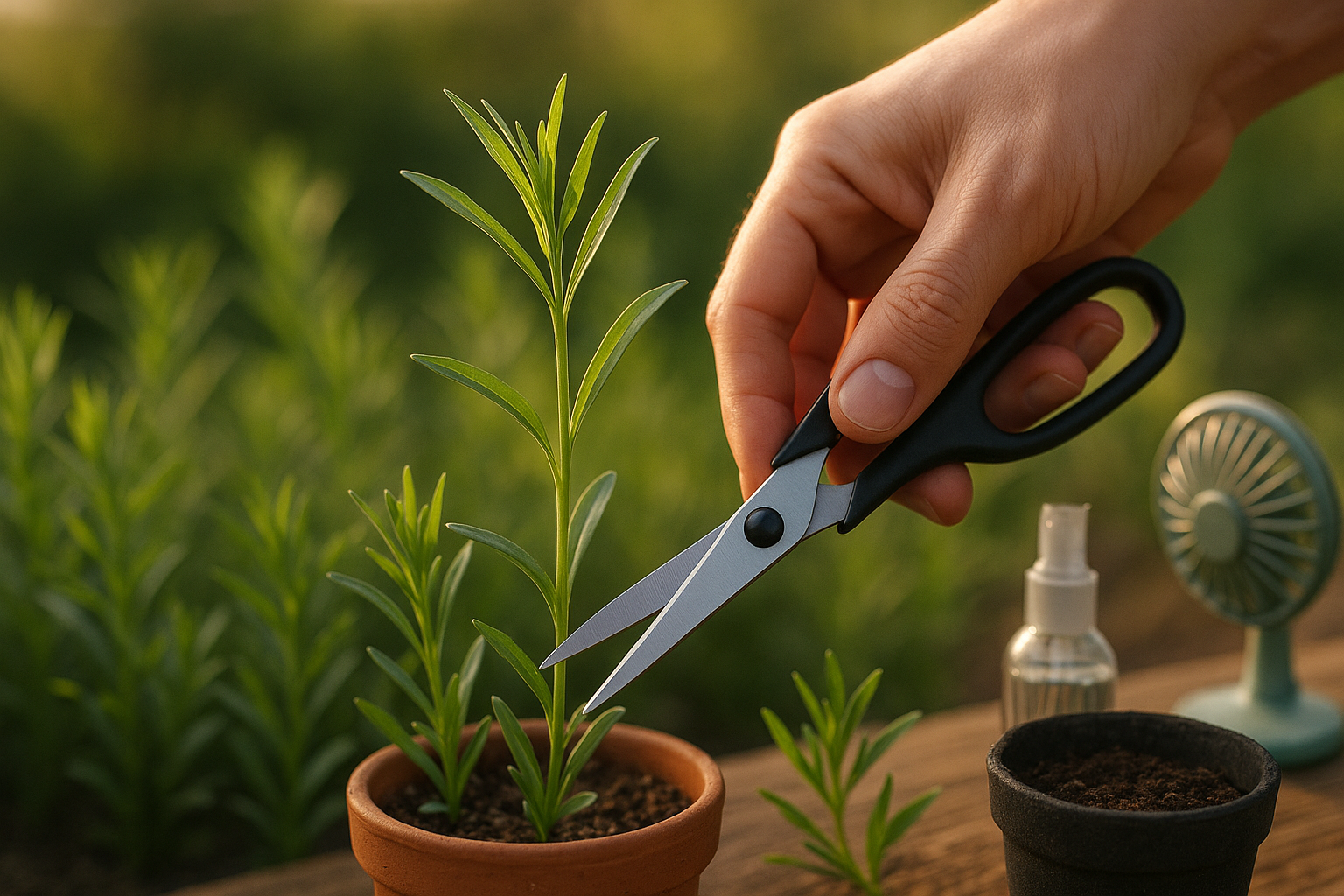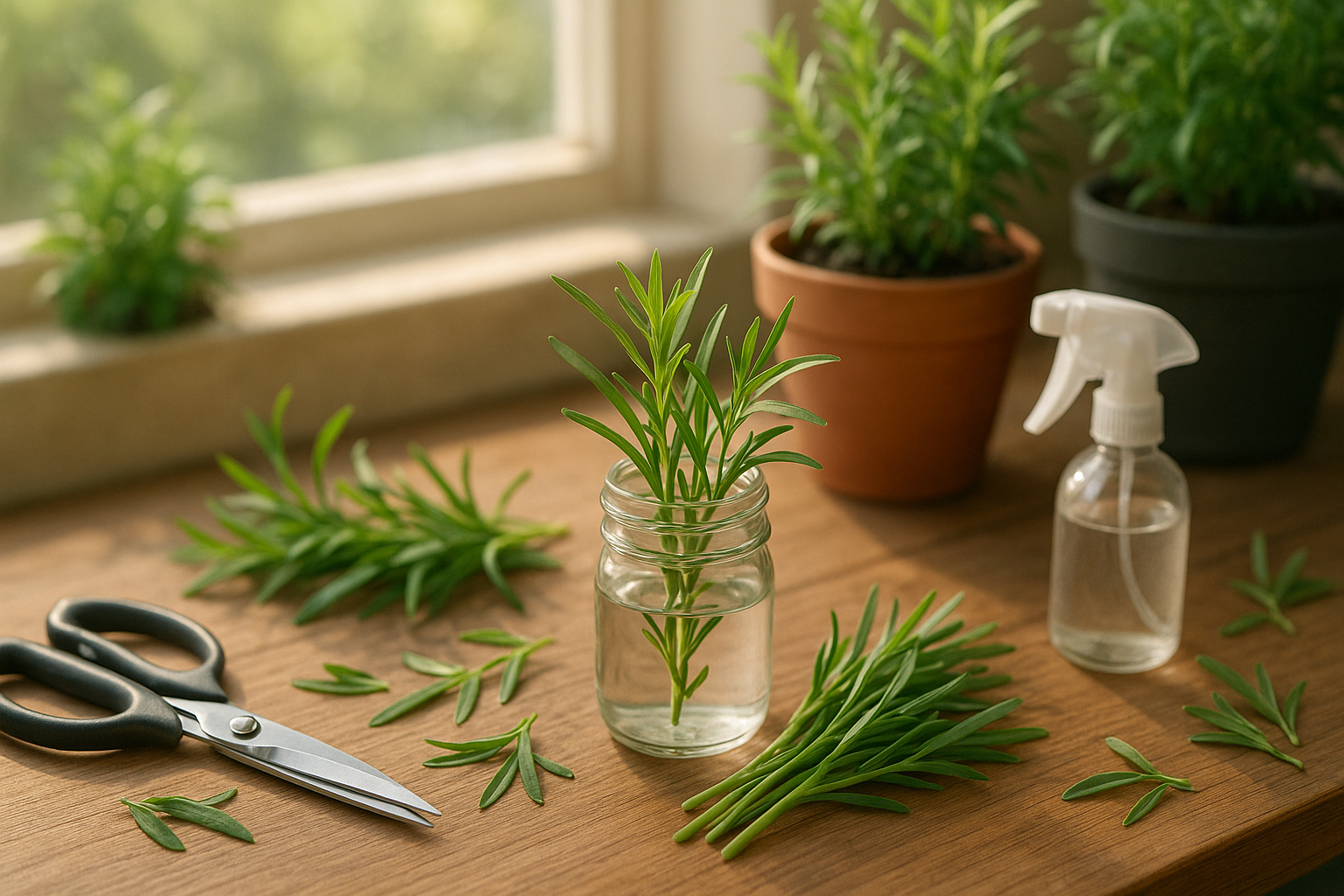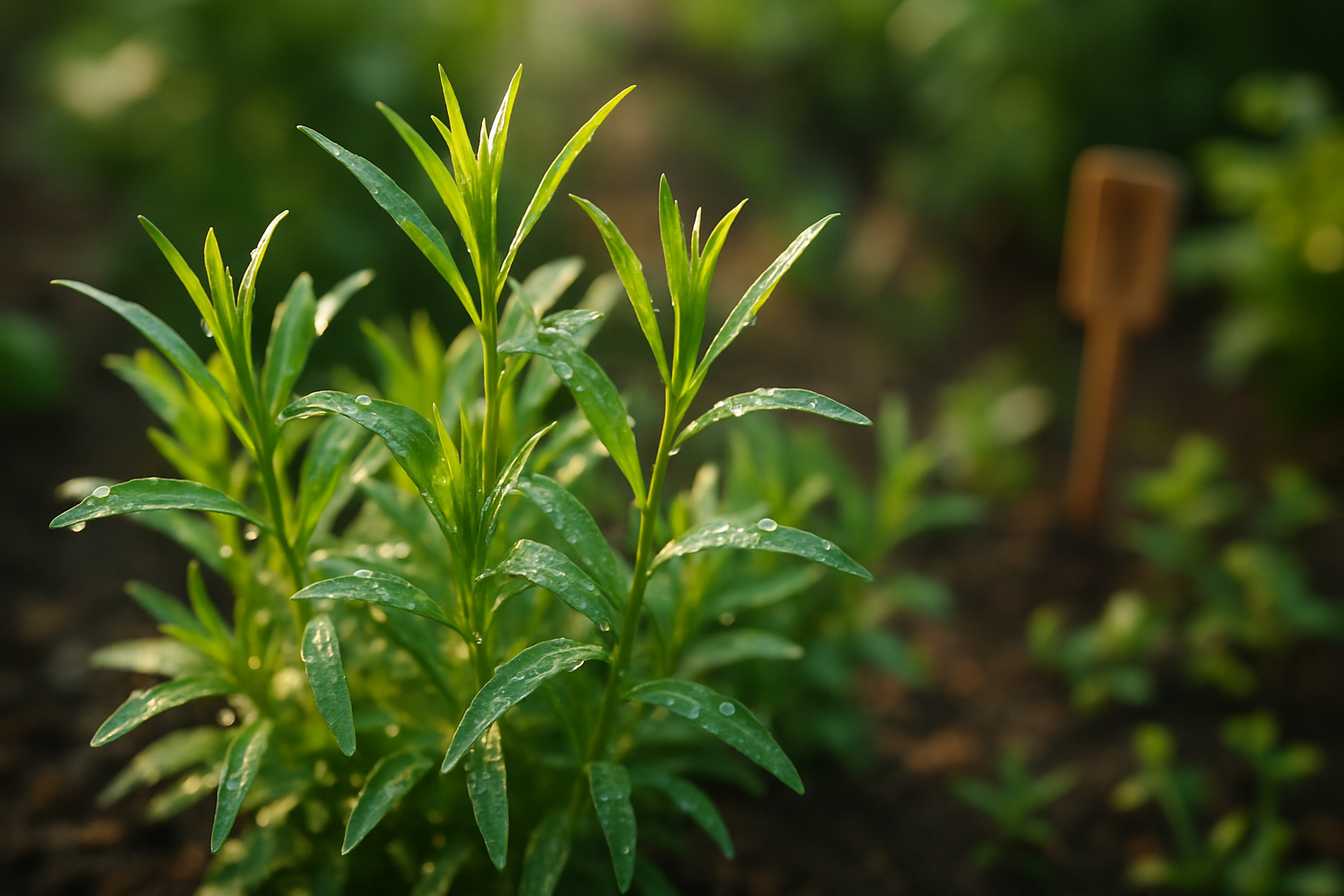When and Why to Harvest Tarragon

The best time to harvest tarragon is from late spring to early summer, just before the herb begins to flower. Early morning—right after the dew has dried but before the sun gets too hot—is ideal. This is when tarragon’s essential oils are at their peak, making the leaves especially flavorful.
Look for stems that are at least six inches tall with lush, tender leaves; these indicate the plant is mature and ready for cutting. Avoid harvesting if the plant looks spindly or hasn’t produced much new growth yet—give it more time and consider light fertilizing if needed.
Regularly snipping off a few stems, instead of harvesting all at once, not only supplies you with fresher herbs but also encourages bushier, more vigorous regrowth. Frequent harvesting helps prevent the plant from bolting—producing flowers—which can make the leaves tough and less flavorful.
By keeping the plant trimmed, you’ll extend its productive season, enjoy more frequent harvests, and maintain strong yields. Try snipping back about a third of the growth every few weeks; your tarragon will thank you with a steady supply of aromatic leaves all season long.
Identifying the Right Stems to Cut
When harvesting stems from your plants, choosing the right ones is crucial for both the health of your plant and the success of your cuttings. Focus on selecting mature, healthy stems that are free from disease or discoloration—these typically feel firm, stand upright, and have several sets of leaves.
Mature stems often have a slightly flexible, green appearance, while new growth can be too soft, and old or woody stems may not root well. When making your cuts, never take more than one-third of the plant at a time—removing too much can cause unnecessary stress and slow down regrowth.
Always avoid weak, spindly, or overly thin stems, as they lack the vitality needed for successful propagation. Likewise, skip very young or flowering shoots; these can be fragile and may divert energy away from root development.
For example, if you’re propagating basil, trim a 4- to 6-inch stem right above a leaf node on a strong branch, leaving plenty of foliage below for the mother plant to thrive. This selective approach helps ensure your plant remains robust and productive while maximizing your chances of healthy new growth.
Proper Techniques for Cutting Tarragon

When it comes to cutting tarragon, using the right tools and techniques makes a big difference in the health of your plant. Always use clean, sharp scissors or herb pruners to snip stems—dirty or dull blades can crush the plant and introduce disease. Before you start, sterilize your tools with a quick wipe of rubbing alcohol.
When harvest time arrives, focus on taking cuttings from healthy, mature stems. The best place to cut is just above a leaf node—that’s where a pair of leaves meets the stem. Making your cut here encourages new growth and a bushier plant, rather than leaving bare, woody sections.
Avoid taking more than one-third of the plant at a time; this allows the tarragon to continue photosynthesizing efficiently, keeping it strong and productive. For the healthiest results, harvest tarragon during the cooler morning hours, after any dew has dried. This not only helps preserve the essential oils for better flavor but also reduces plant stress.
Depending on your tarragon’s growth, you can usually cut stems every three to four weeks during the growing season, being mindful to leave enough foliage for the plant to recover. With these tips, you’ll enjoy a thriving supply of fresh tarragon all season long.
Pruning and Harvesting
Harvesting herbs like basil, mint, or oregano doesn’t just give you fresh flavors for your kitchen—it also acts as a light pruning method that encourages your plants to grow bushier and healthier. By pinching off leaves just above a pair of healthy leaf nodes, you’re prompting the plant to send out new shoots, creating a fuller, lusher shape.
For example, when you regularly snip the tips of basil stems, you’ll notice the plant quickly fills out instead of becoming tall and leggy. If your goal is continuous leaf production, make it a habit to remove any flower buds as soon as they appear. Flowering signals the plant to focus energy on seed production, which can reduce leaf yield and flavor. Simply pinch or cut off the developing flowers with clean scissors or your fingers.
However, be careful not to over-harvest or prune more than one-third of the plant at a time, as this can stress the plant and slow its recovery. Always use clean, sharp scissors to prevent disease, and plan for small, frequent harvests rather than infrequent heavy cuts. This gentle, regular maintenance keeps your herbs producing plenty of tasty leaves all season long.
Post-Harvest Care for Your Tarragon Plant
Once you’ve harvested tarragon, your plant needs a little extra TLC to bounce back and stay productive. Start by watering consistently, but avoid letting the soil get soggy—tarragon prefers moist, well-drained conditions.
After harvesting, your plant’s energy reserves may be a bit depleted, so feed it lightly with a balanced, all-purpose fertilizer or a sprinkle of compost. This will encourage new leafy growth without overloading the plant.
Mulching with straw or shredded leaves helps retain soil moisture and keeps roots cool. Just be sure not to pile mulch against the stems, as this can cause rot.
Keep an eye on your tarragon for any signs of stress or disease, like yellowing leaves or wilting. If you notice these symptoms, trim back damaged areas and remove any debris to maintain healthy airflow.
To promote rapid regrowth, place your plant in a sunny spot—tarragon thrives with about six hours of sunlight each day. In hot climates, some afternoon shade can help prevent scorching.
By following these simple steps, you’ll help your tarragon recover faster and keep it lush for future harvests, so you can enjoy flavorful sprigs all season long.
Storing and Using Your Fresh Tarragon
Fresh tarragon has a delicate, sweet anise flavor that can elevate your dishes, so storing it well is key to maximizing its taste. To keep fresh tarragon at its best, wrap the stems loosely in a damp paper towel, tuck them inside a resealable plastic bag, and store them in the fridge’s crisper drawer. This method helps preserve the leaves’ essential oils and keeps them vibrant for up to a week.
For an easy kitchen hack, stand the stems in a small glass of water (like a bouquet of flowers), cover loosely with a plastic bag, and refrigerate. Just remember to change the water every day or two.
When it comes to cooking, fresh tarragon shines in classic dishes like chicken salad, béarnaise sauce, or sprinkled raw over roasted vegetables for a fresh finish. Dried tarragon is great for seasoning soups, vinaigrettes, and stews, but its flavor is more concentrated, so use less than you would fresh.
To make your harvest last longer, try preserving tarragon by air-drying small bunches in a dark, well-ventilated space or freezing the leaves. Chop them and store in ice cube trays topped with olive oil or water for easy drop-in flavor bursts whenever you cook.
